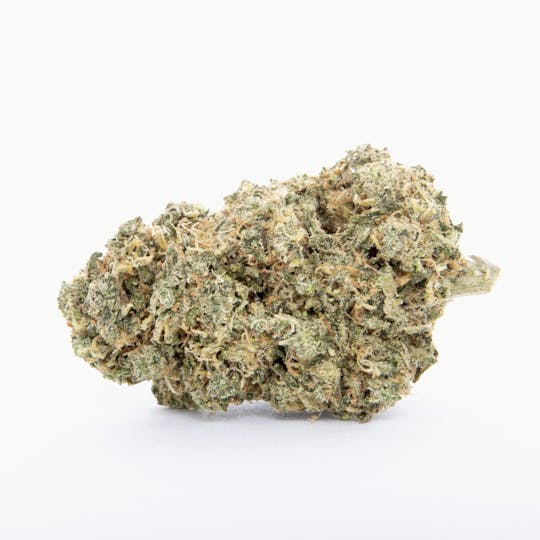
Durban Poison | 3.5g Indoor
With trichomes that put out a sweet aroma alongside hints of lavender and pine, these frosty buds are a beautiful minty green and they'll set you straight without clouding your mind.
Lineage: South African Landrace
- Earthy
- Woody
- Spicy/Herbal
WHAT ABOUT US
We rarely think of existence. Where do we come from and why? More importantly where does our weed come from? Do you care? You should care. Even if you care a tiny bit you will have deep love for our flower. All of the water used in our cultivation is collected from the air, we pull no water from California tap. Why? Because a single cannabis plant needs approximately 150-250 gallons of water to reach flowering state. Our cultivation has no runoff; even “safe” fertilizers and nutrients will contaminate surrounding water supplies making life inhabitable for indigenous species. And we love animals. We also love bugs and use them, like rolly pollys, earthworms and nematodes along with friendly bacteria, fungi and protozoa to create a “soil food web” which helps naturally prevent disease and plant-eating predators by working with the plant to provide nutrients and protection. And when we are done we donate all used soil to public parks. Because why not? Parks are great and we should all support them. And yes, we talk to our flower. These thoughtful cultivation practices and the good energy surrounding our flower in their life cycle creates robust terpene profiles, with a strong nose that—when you smoke it—you will understand the world in a different way.
WHAT ABOUT OUR PACKAGING
Our sustainability ethos also applies to our packaging. While we have to package our products in something, we try not to use too much stuff, especially plastic. Most of our packing is paper (as little as possible). We spent a year and a half perfecting a child resistant mylar bag that is made from plant starch and are pretty proud of this. We are not perfect but we are trying. We will never put profits over a clean and beautiful earth.
EQUITY IN THIS INDUSTRY
We are very aware of the historical injustices in this industry and understand the responsibility we all have. We will use our voice and our community and our weed to try and keep this industry real. And diverse. And fair. We donate a portion of our proceeds to fund programming for currently and post incarcerated populations. Though we know there is still way more to do and we are committed to being part of the solution. Pure Beauty is female and minority owned.
Durban Poison has deep roots in the Sativa landrace gene pool. The strain’s historic phenotypes were first noticed in the late 1970s by one of America’s first International strain hunters, Ed Rosenthal. According to cultivation legend, Rosenthal was in South Africa in search of new genetics and ran across a fast flowering strain in the port city of Durban. After arriving home in the U.S., Rosenthal conducted his own selective breeding process on his recently imported seeds, then begin sharing. Rosenthal gave Mel Frank some of his new South African seeds, and the rest was cannabis history.
Frank, who wrote the “Marijuana Grower’s Guide Deluxe" in 1978, modified the gene pool to increase resin content and decrease the flowering time. In search of a short-season varietal that could hit full maturation on the U.S. East Coast, Frank’s crossbreeding efforts resulted in two distinct phenotypes, the “A” line and “B” line. The plant from Frank’s “A” line became today’s Durban Poison, while the “B” line was handed off to Amsterdam breeder David Watson, also known as “Sam the Skunkman.”
Durban Poison has a dense, compact bud structure that’s typical of landrace Indica varieties, but the flowers’ elongated and conical shape is more characteristic of a Sativa.


